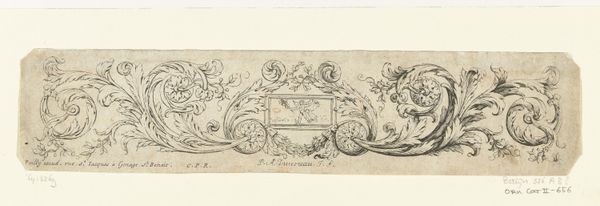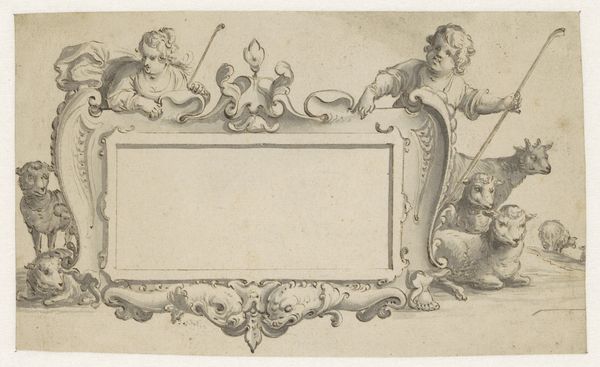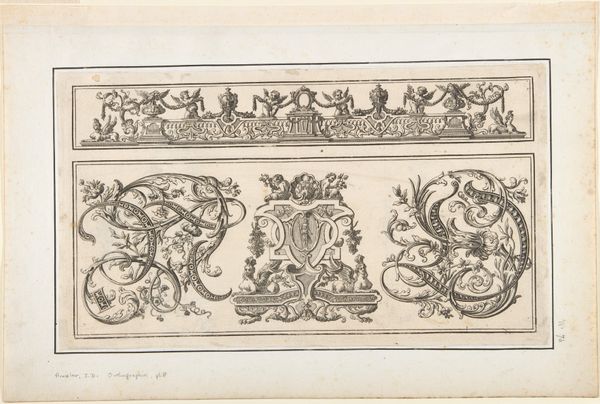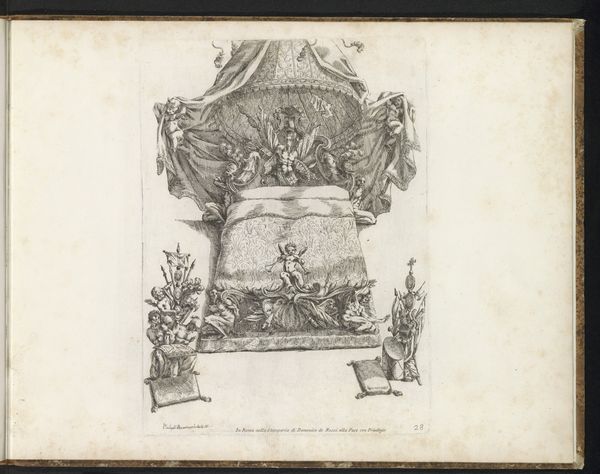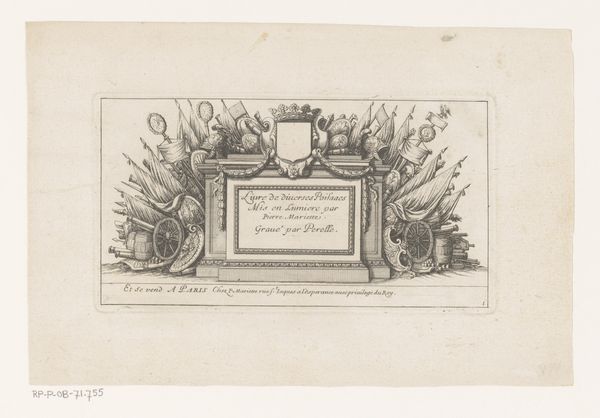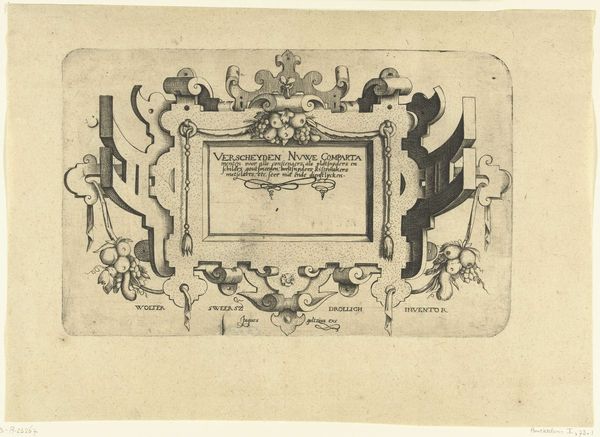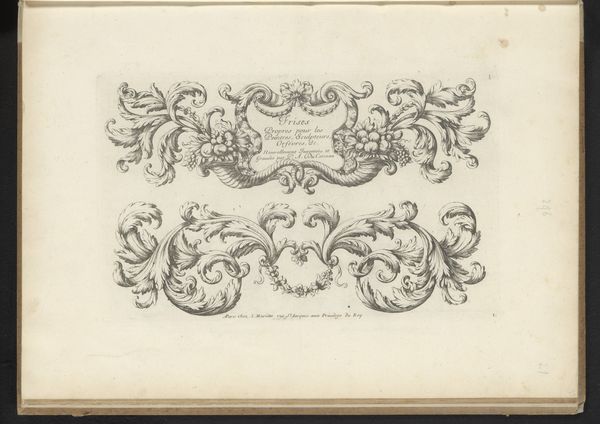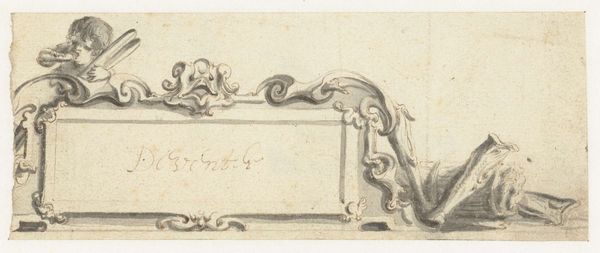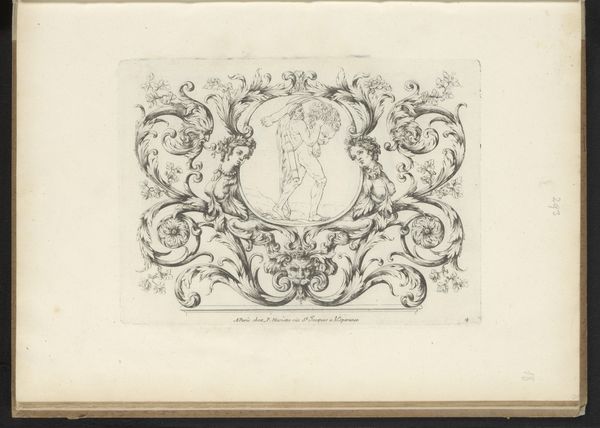
drawing, ink, pen
#
drawing
#
baroque
#
pen sketch
#
landscape
#
figuration
#
form
#
ink
#
line
#
pen
#
genre-painting
Dimensions: height 105 mm, width 200 mm
Copyright: Rijks Museum: Open Domain
Pieter Jansz. created this drawing, "Cartouche met aan weerskanten herders en koeien," using pen and gray ink. The cartouche, a decorative frame for an inscription, is flanked by pastoral scenes. On either side, we see figures tending to cattle, evoking a sense of Arcadian simplicity and harmony with nature. The shepherd and cow are ancient symbols. In classical antiquity, the shepherd was an allegorical figure representing leadership and care, echoed later in Christian iconography with Christ as the Good Shepherd. The cow, a symbol of nourishment and fertility, has roots stretching back to ancient Egyptian and Indian religions, where bovine deities were revered. Consider how the shepherd motif reappears in Renaissance paintings, idealized and imbued with humanist values, or in Baroque art, charged with dramatic emotion. This symbol resurfaces, carrying layers of cultural memory, its meaning subtly altered by each epoch's unique psychological landscape. The enduring presence of these symbols speaks to our collective subconscious, where primal themes of care, sustenance, and our relationship with nature resonate deeply. The emotional power of these images lies in their ability to connect us to these ancient, persistent narratives.
Comments
No comments
Be the first to comment and join the conversation on the ultimate creative platform.

